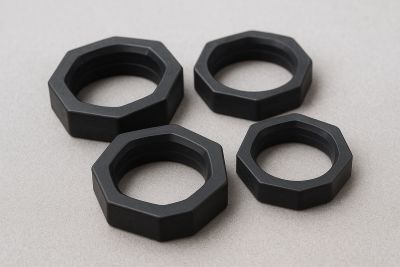Hydraulic systems power countless machines across industries, from automotive braking systems to massive construction equipment. At the heart of these systems are hydraulic seals, which play a critical role in preventing fluid leakage, maintaining pressure, and ensuring smooth operation. Without reliable seals, even the most advanced hydraulic equipment would suffer from inefficiencies, downtime, and costly repairs.
One particular sealing innovation, the hex seal, has been gaining traction due to its strength, reliability, and user-friendly design. With the demand for smaller, lighter, and more efficient systems, compact hex seals are emerging as the preferred choice for engineers and manufacturers.
This article explores the benefits, applications, and considerations of adopting compact hydraulic hex sealing solutions.
Understanding Hydraulic Hex Seals
What is a Hex Seal?
A hydraulic hex seal is a specialized sealing component designed with a hexagonal head, making it easy to install and remove using standard tools. Unlike conventional seals, which may require additional fasteners or fittings, hex seals integrate both sealing and fastening functions in one compact design.
Basic Function:
➡️ Prevents fluid leakage in high-pressure environments.
➡️ Maintains system integrity by securing hydraulic fittings.
Difference from Standard Seals:
➡️ Standard seals often require additional hardware and can be difficult to install in confined spaces.
➡️ Hex seals simplify installation while providing superior resistance to pressure and vibration.
How It Works
In operation, the hex seal compresses against mating surfaces within a hydraulic system. The sealing element, often made from elastomeric materials like nitrile or Viton, forms a tight, leak-proof barrier. The hex head design allows precise torque application, ensuring a reliable seal that withstands repeated use and extreme conditions.
Why Compact Design Matters
1. Space Efficiency: Many modern hydraulic systems are being downsized without sacrificing performance. Compact hex seals fit neatly into tight assemblies, making them ideal for equipment where space is at a premium.
2. Performance Under Pressure: Smaller doesn’t mean weaker—compact designs maintain high sealing integrity even under extreme pressures.
3. Ease of Installation: Hex seals can be installed quickly using common tools, saving time during assembly and maintenance.
Key Features of a Compact Hydraulic Hex Sealing Solution
1. High-Pressure Resistance: Engineered to withstand demanding hydraulic environments.
2. Leak-Proof Design: Ensures system efficiency and safety.
3. Fluid Compatibility: Works with a wide range of hydraulic fluids, including synthetic and petroleum-based oils.
4. Durability in Harsh Conditions: Withstands extreme temperatures, vibration, and heavy use.
5. Material Options: Available in nitrile for cost-effectiveness, Viton for high temperature resistance, or PTFE for chemical compatibility.
Applications and Industries
➡️ Automotive: Used in braking, steering, and transmission systems where compact seals reduce weight and save space.
➡️ Aerospace: Lightweight, durable solutions are critical for high-performance aircraft systems.
➡️ Construction & Heavy Machinery: Withstands heavy loads, vibrations, and long duty cycles.
➡️ Oil & Gas / Energy: Ensures safety and reliability in high-pressure and hazardous environments.
Advantages Over Conventional Seals
➡️ Compact Footprint: Offers equal or greater sealing performance in less space.
➡️ Extended Service Life: High durability reduces replacement frequency.
➡️ Reduced Downtime: Fewer leaks mean less maintenance and fewer system interruptions.
➡️ Cost-Effectiveness: Saves money by minimizing fluid loss, repair costs, and downtime.
Installation and Maintenance Tips
➡️ Proper Torque: Use the recommended torque when tightening hex seals to ensure secure fit without over-compression.
➡️ Fluid Compatibility: Always check material compatibility with the system’s hydraulic fluid.
➡️ Routine Inspections: Regularly check seals for wear, cracks, or swelling.
➡️ Replacement Guidelines: Replace seals promptly when signs of deterioration appear to prevent system damage.
Choosing the Right Hydraulic Hex Seal
When selecting a seal, consider:
➡️ Pressure Range: Ensure the seal is rated for the system’s maximum pressure.
➡️ Fluid Type: Match seal materials with hydraulic fluid to avoid degradation.
➡️ Operating Temperature: Choose materials designed for the system’s thermal conditions.
➡️ Space Constraints: Compact seals are ideal for tight assemblies.
Reliable sourcing matters, choosing seals from trusted manufacturers ensures quality, compliance, and long-term performance. Many suppliers also offer customization in size, material, or surface coating to meet unique application needs.
Conclusion
Compact hydraulic hex seals represent a smart, reliable, and efficient solution for today’s demanding hydraulic systems. Their ability to save space, deliver leak-proof performance, and extend system life makes them invaluable across industries such as automotive, aerospace, and heavy machinery.
For engineers and operators seeking improved efficiency and durability, compact hydraulic hex sealing solutions offer a proven path forward. The key lies in selecting the right seal for your application and working with trusted suppliers who can provide quality and customization.
Post time: Sep-25-2025


